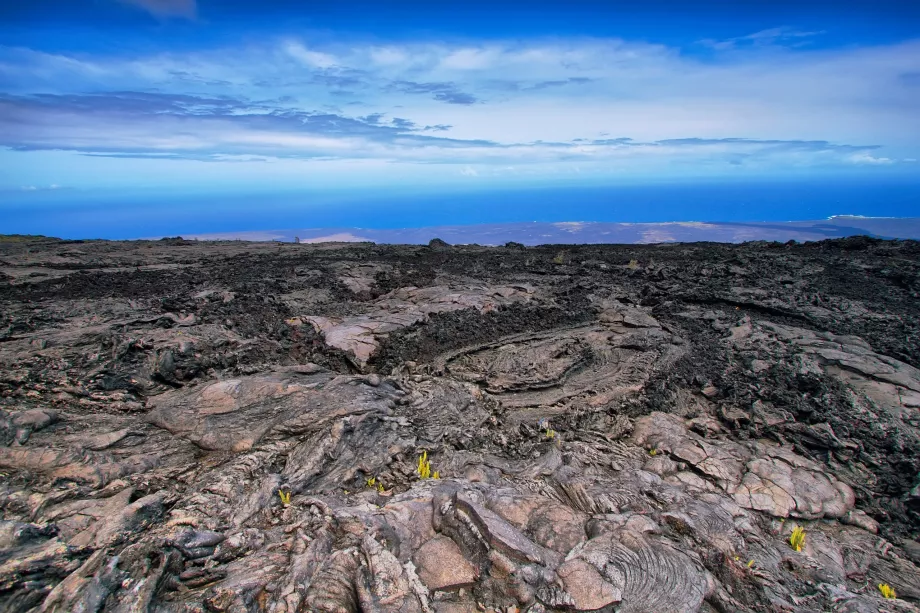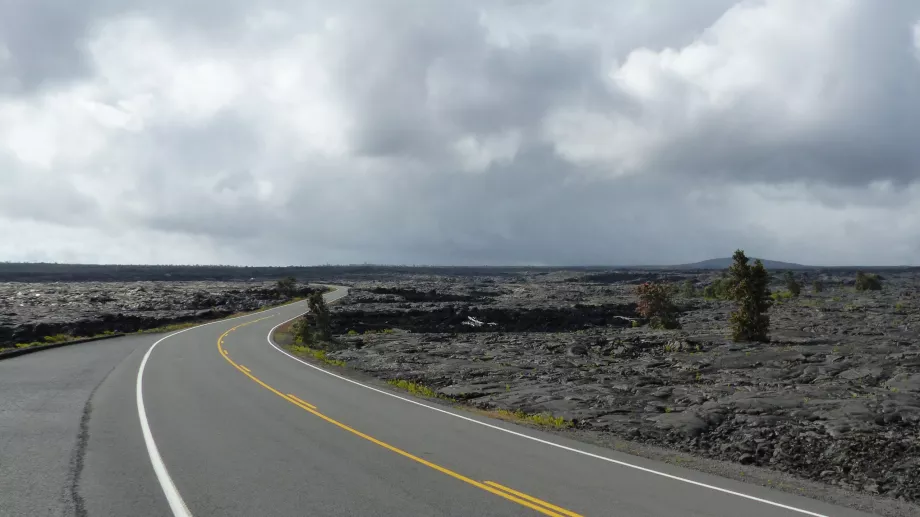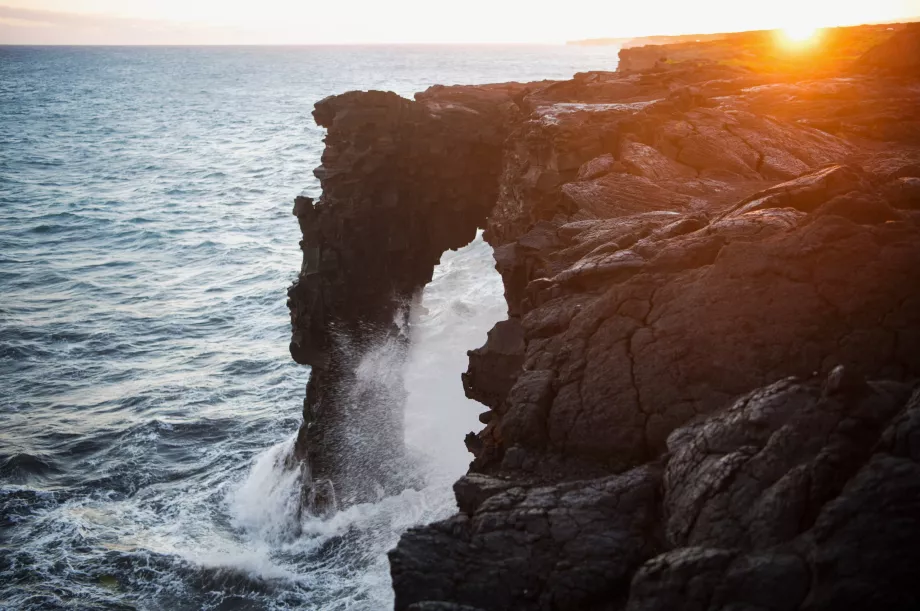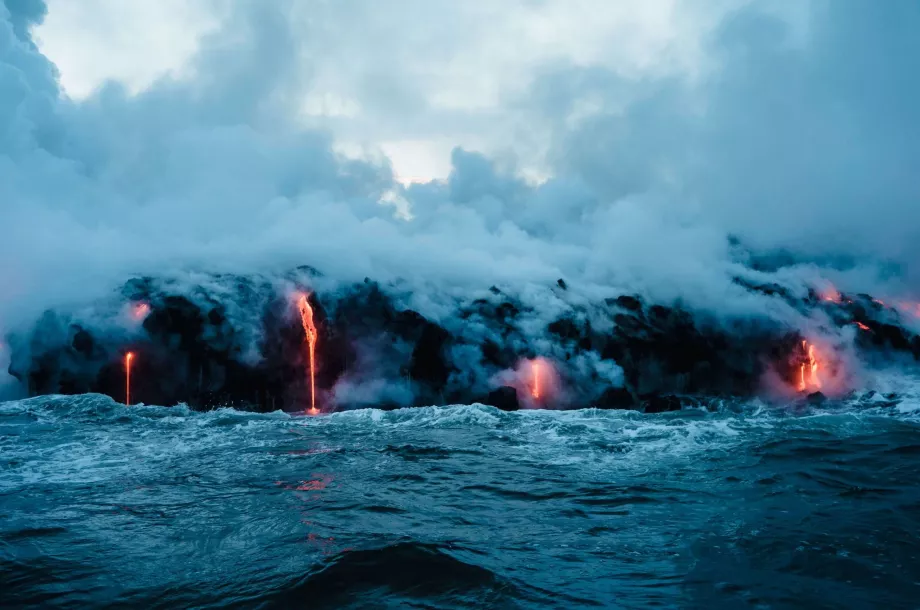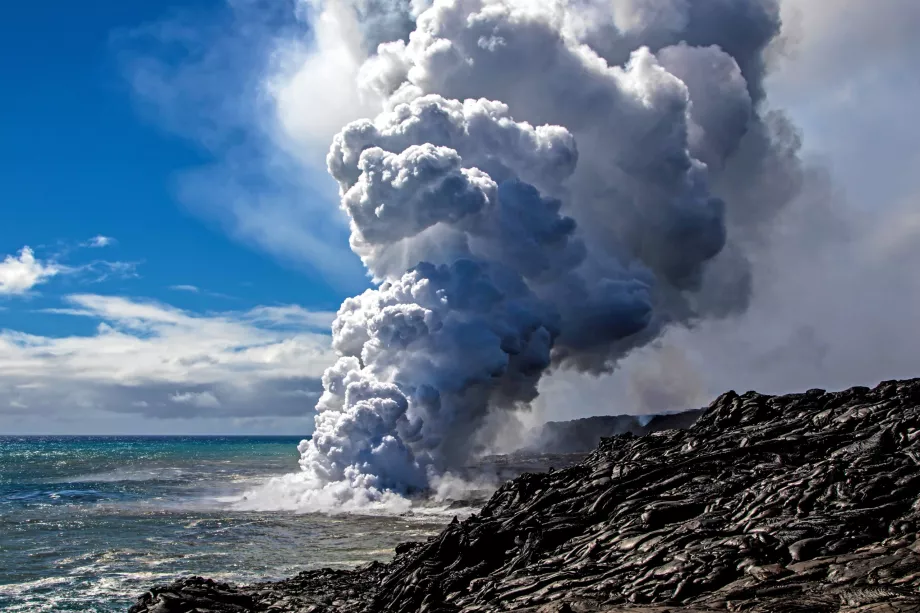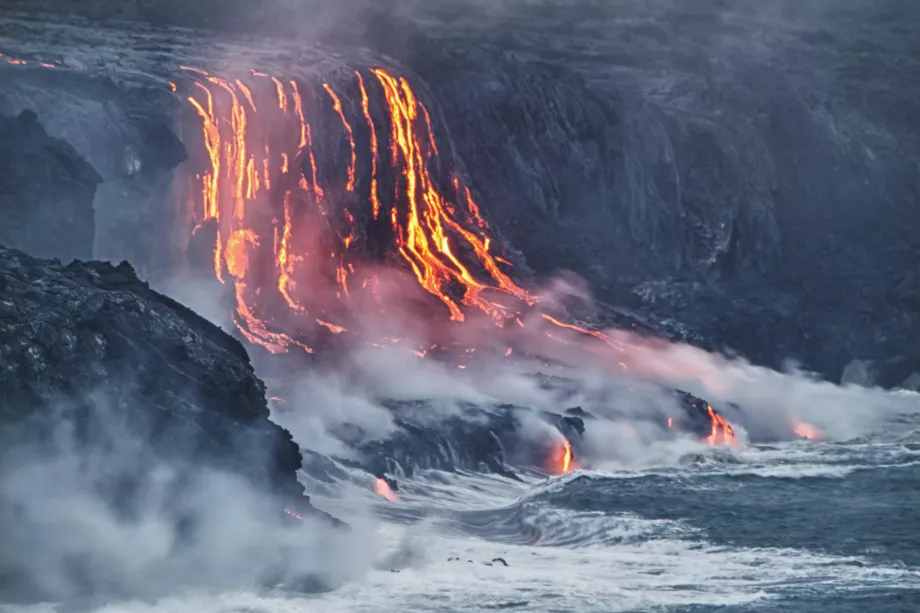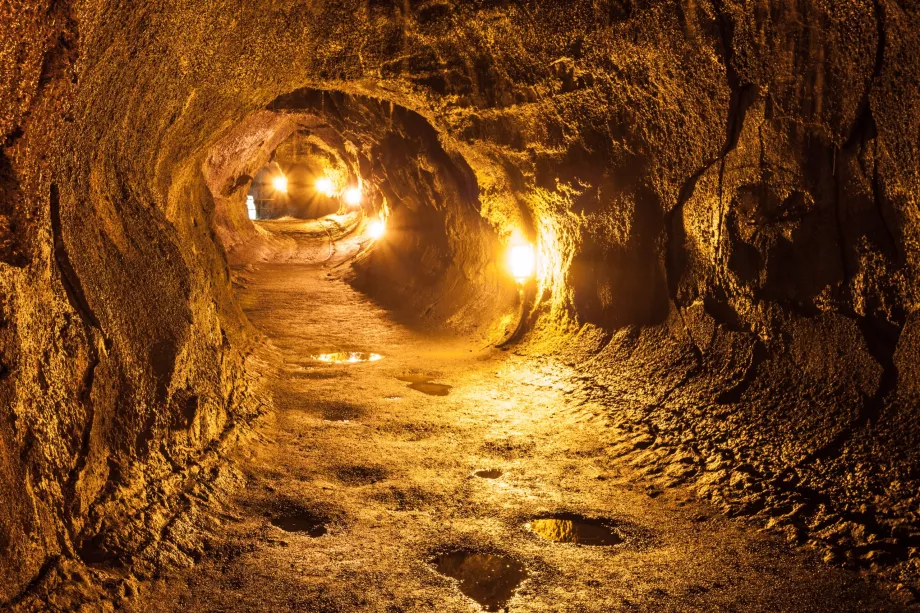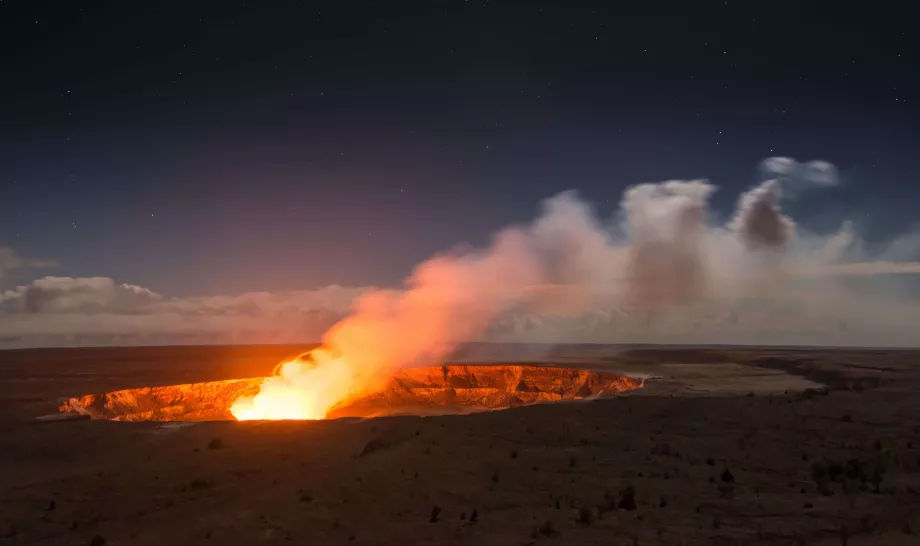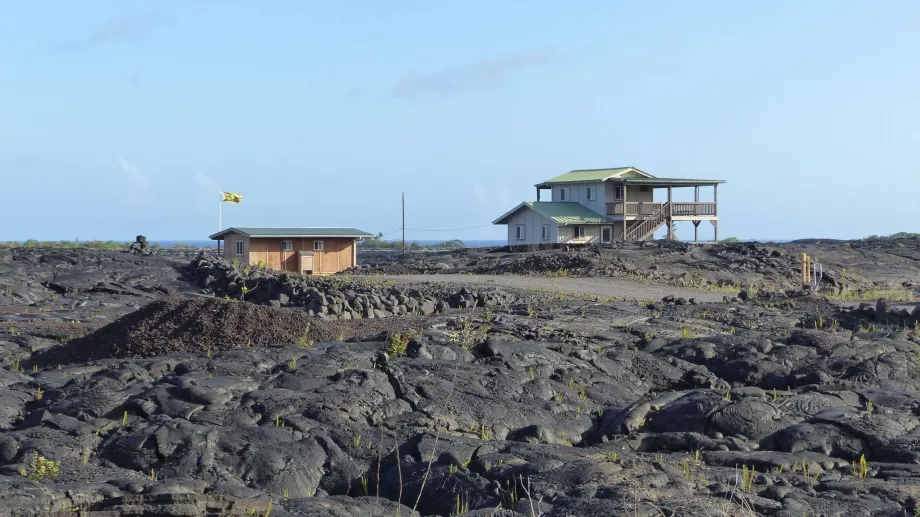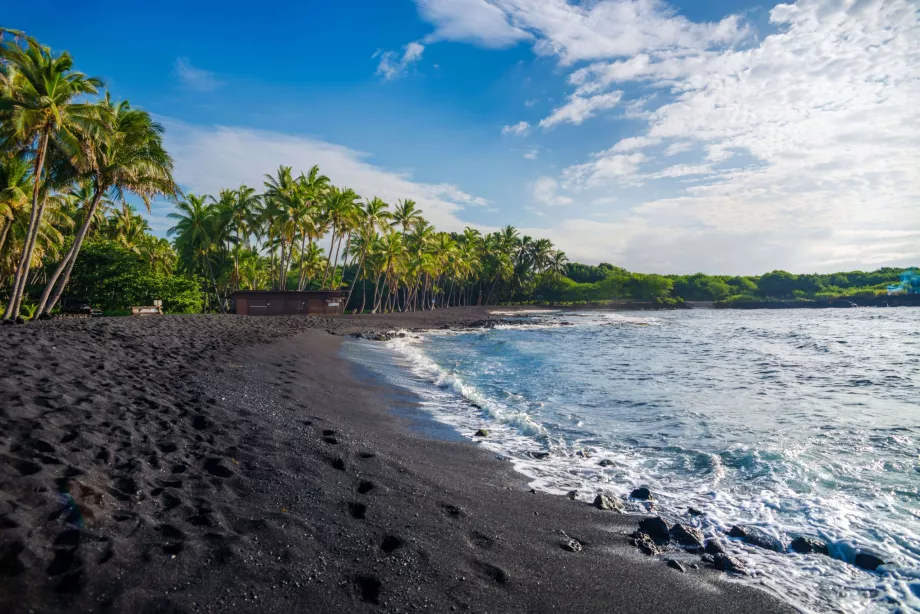Chain of Craters Road
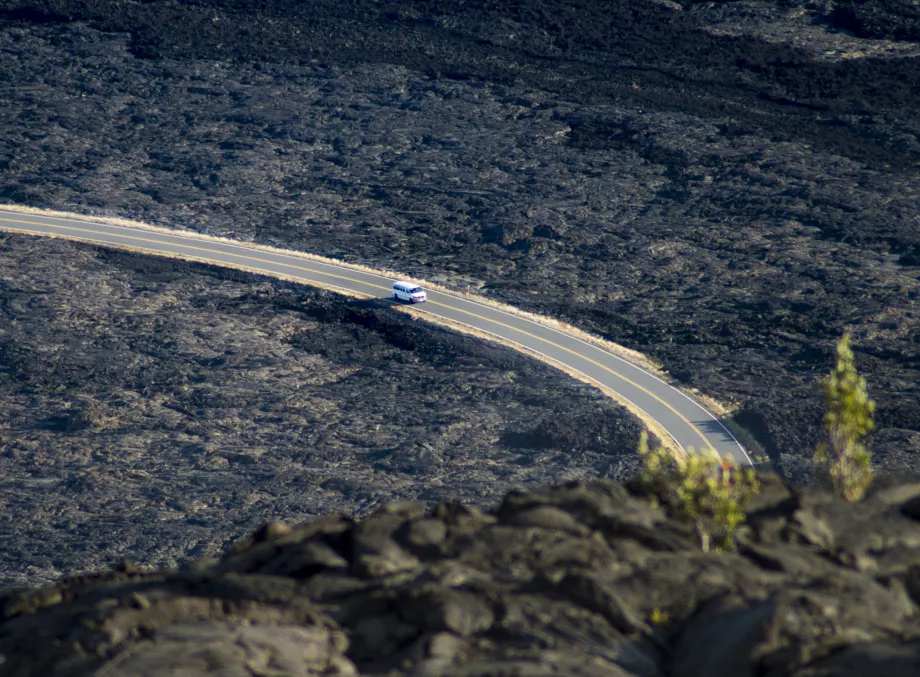
The main road winds through Volcanoes National Park for 35 km, climbing more than 1,200 metres in elevation and taking you through an incredible volcanic landscape from active craters to dozens of smaller extinct craters, lava fields of solidified black matter, incredible views from high cliffs to the ocean and jagged coastlines formed by rapidly solidifying lava creating extraordinary formations.
The 10 best hotels on the Big Island
Built in 1928 and leading up to the coastal town of Kalapana, the road was severed by a major eruption in the late 1950s right where it ends.
So you have to take the same road back up to Kilauea Volcano near the national park's visitor center. In 2018, during a major eruption, other sections of the road were affected, but have gradually been reopened.
The road is a good quality asphalt road with good horizontal markings and driving here does not require any special vehicles, it is passable for all kinds of vehicles.
Craters and lava fields
The road from the forested summit around Kileauea Craters gradually descends gently alongside many of the extinct craters, which have small viewing platforms and picnic areas.
In its central section it passes through numerous lava fields from the eruptions of Napalu Crater, most dating from the 1940s and 1980s. At the end of this section, you reach the edge of the Holi cliffs, which offer an incredible spectacle.
You'll have a narrow lowland strip along the coastline mixed with dried lava fields and vegetation growing through hordes of black lava and the endless Pacific. In the background you can clearly see the white smoke of the still living lava entering the ocean.
Hōlei Sea Arch
The road reaches the ocean, where you'll see a spectacle where the central feature is a 30+ metre high cliff mostly made up of rough and rugged looking solidified black lava, which has a completely different texture to the slowly cooling flowing lava you drove over on the road.
The main landmark of the cliffs is the Hōlei Sea Arch, a 27-metre high lava formation resembling a sea gate.
The road to Kalapana
This is where the Chain of Craters Road ends. Only a dirt footpath continues along the former road to the village of Kalapana, which you can follow through the drying lava fields of Puu Oo Crater.
Up until 2018, you could observe live flowing lava entering the ocean here and creating incredible scenery, especially in the dark and twilight.
However, after a new eruption in 2018, the lava flows have changed and nowadays the lava enters the sea mostly through underground lava tunnels, which offer no such spectacle.
As mentioned in the general description of Volcanoes National Park, the local volcanoes are among the most active in the world, so there is no reason not to believe that in a few years it will again be possible to observe flowing lava entering the ocean up close.
What to see around
Discover all the places to see in Big Island.
Any questions left?
If you have any questions or comments about the article...

